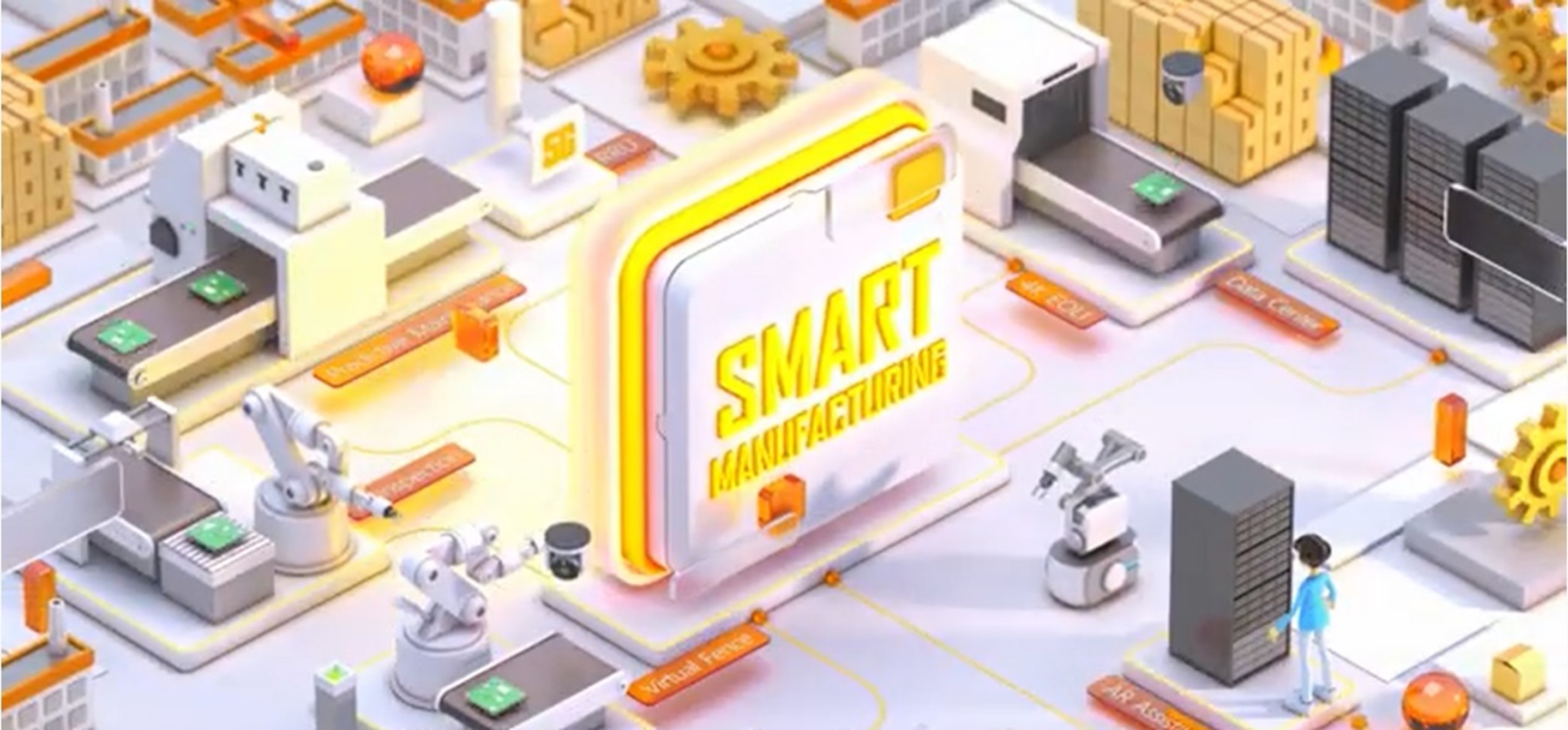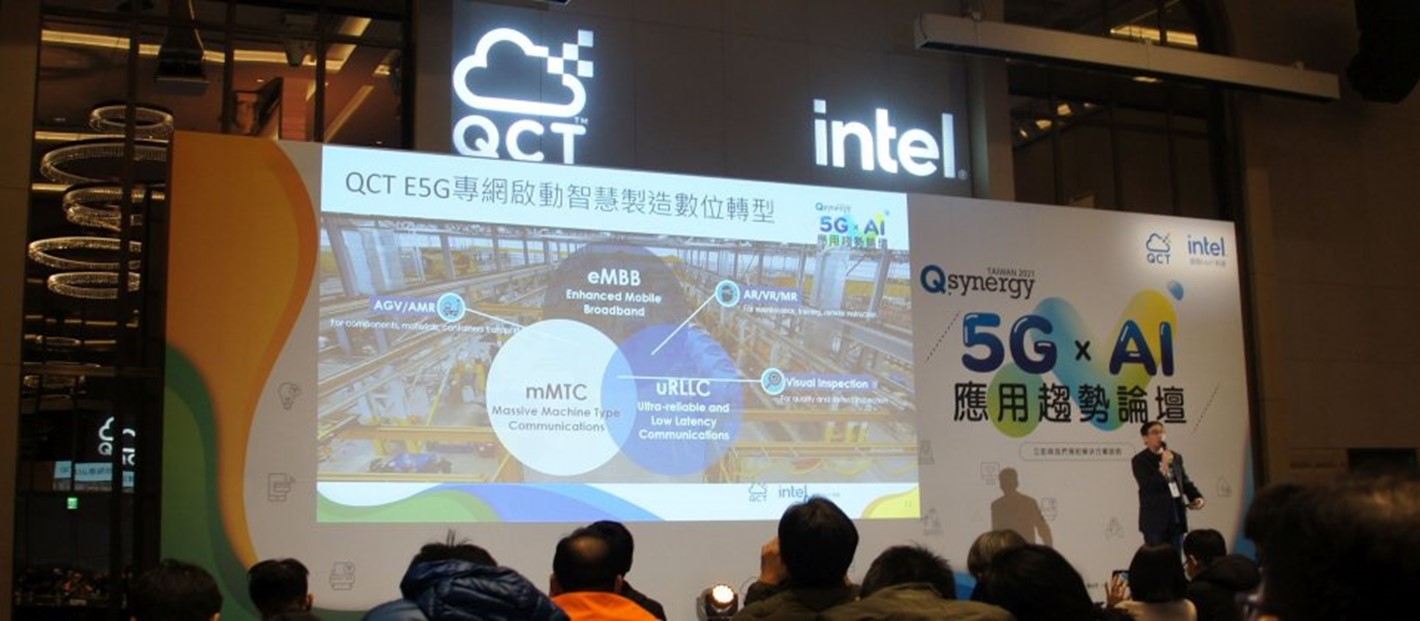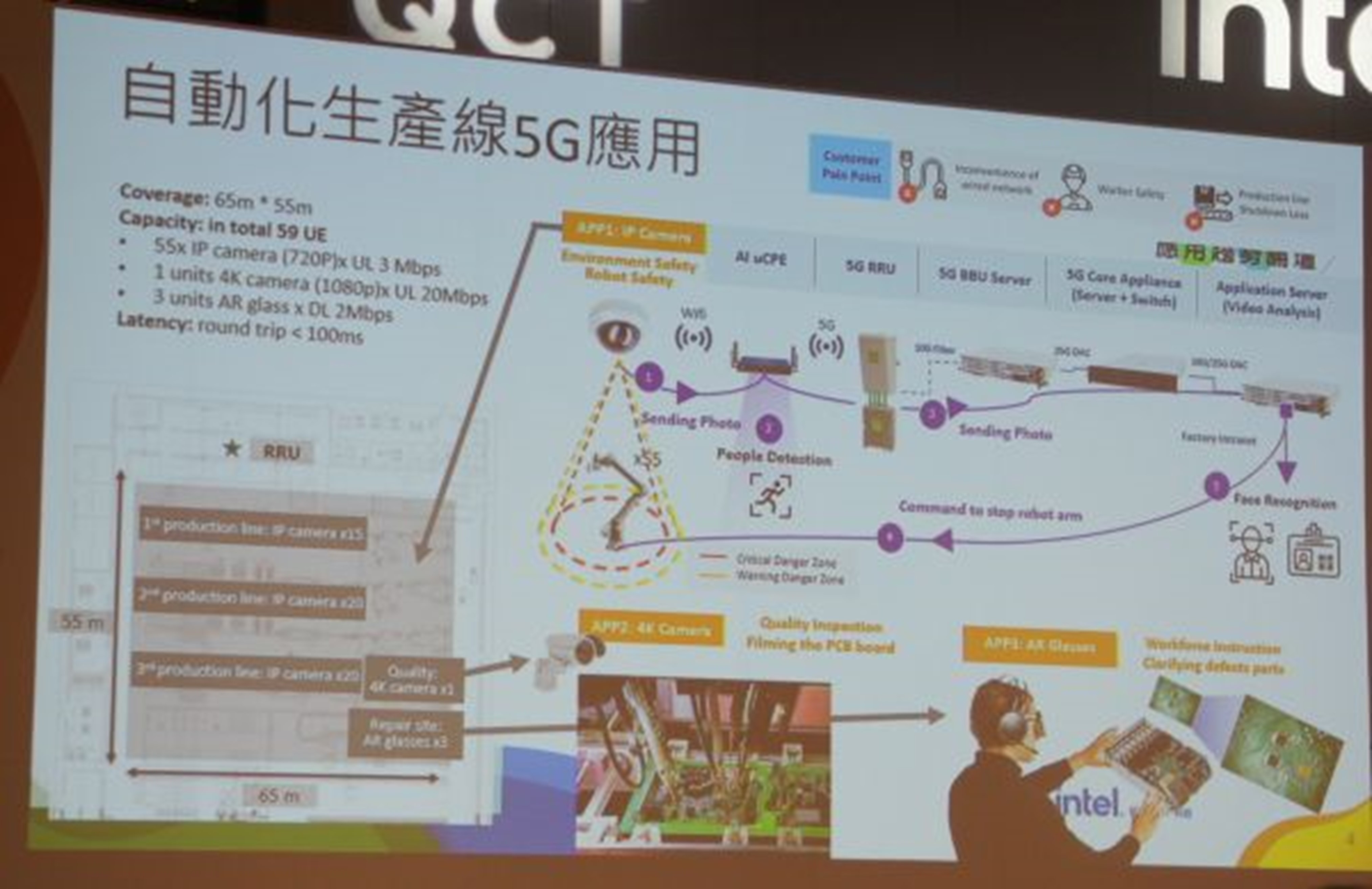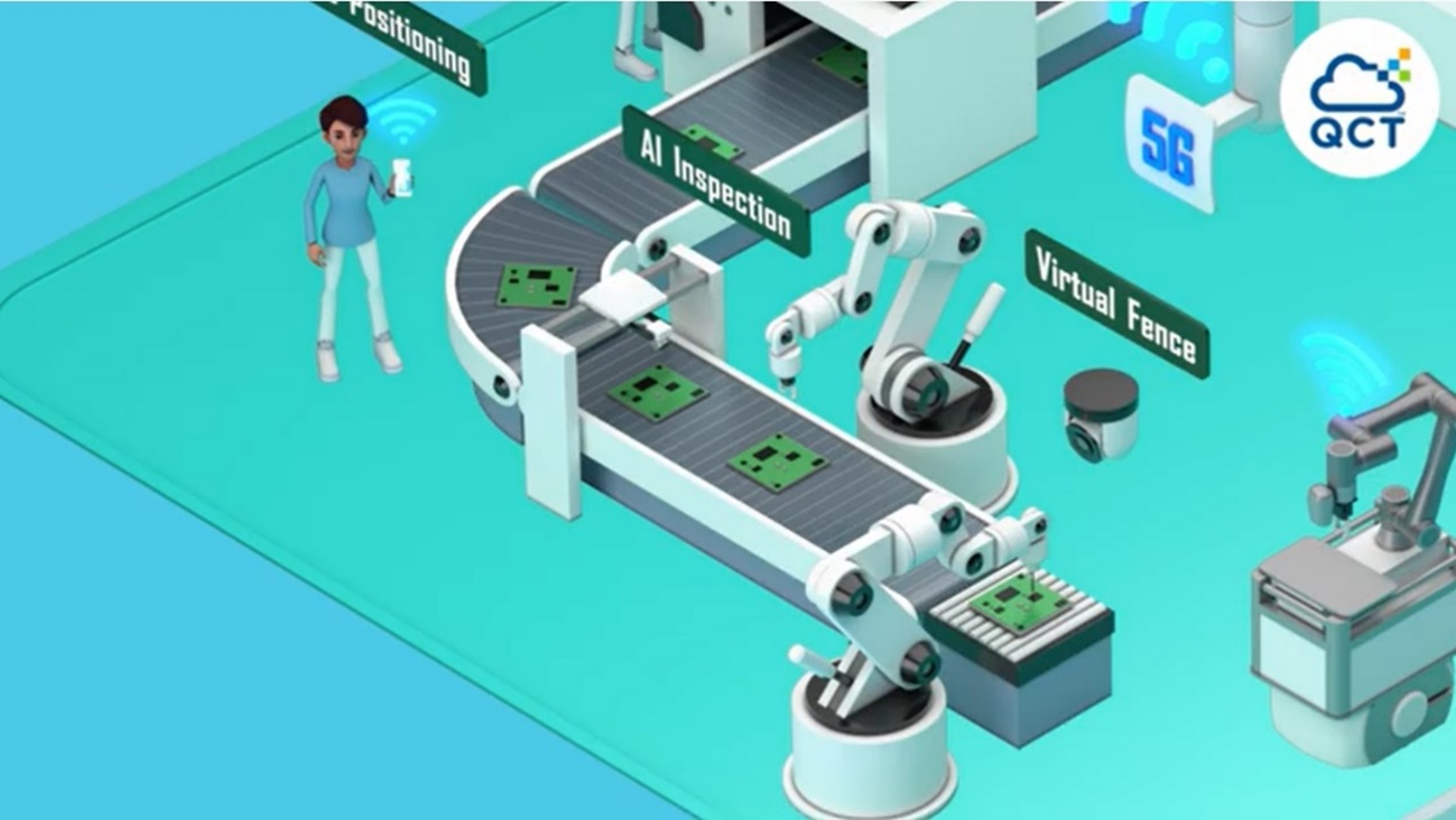 At Q.synergy 2021, QCT showcased its Enterprise 5G solutions consisting of a 5G core network (5GC), a radio access network (RAN) and an operations and management platform (OAM). It also presented smart manufacturing application demos developed independently or in collaboration with partners in its newly opened 5G Open Lab. Some of these applications have been deployed in smart factories to enhance efficiency as well as workplace safety.  Fig. 1. QCT Director, Jack Lin, shared enterprise 5G applications at Q.synergy 2021 The director of Cloud Applications Research Department at QCT, Jack Lin, compared the workings of QCT’s 5G smart factory applications to online broadcasting, “Much like opening multiple online broadcasting programs at the same time, there can be network congestion. Such as when simultaneously uploading multiple images there tends to be significant slowdown in the transmission. However, enterprise 5G networks can provide maximum uplink bandwidth to ensure a much smoother transmission.”  Fig. 2. Architecture of a smart production line in a QCT factory QCT’s 5G smart factory applications have been deployed in its automated production and server rack assembly lines. Take the automated production line as an example, within a 65m x 55m coverage, a 5G RRU can support the uploading of images taken by 55 720P IP cameras, which are deployed in three production lines.  Fig. 3. Illustration of AI inspection and virtual fencing A 4K camera is set up at the end of one of these production lines to take ultra-high-resolution images of each PCBA board coming out of the line. These images are uploaded to an edge cloud for defect detection. Once a defect is detected, on-site maintenance engineers can perform immediate repairs by putting on a pair of AR googles, which overlays virtual guides onto the physical board to accelerate the maintenance process. Moreover, the images stored in the edge cloud can be used for future quality tracing and serve as a basis for yield improvement through image analysis. Another key application deployed at the automated production line is virtual fencing. Through deploying 5G IP cameras on site and connecting them to the uCPE andbackend Enterprise 5G servers, the system can automatically detect personnel trespassing near the operation zone of robotic arms, then send an alert and stop the machinery to ensure workplace safety.  Fig. 4. Illustration of AR cabling In an AR-assisted cabling scenario, 5G and AR technologies are synergized to shorten the training process for new workers. The standard operations are first recorded and transformed into an interactive eSOP. Then, novice workers can simply put on a pair of AR goggles to start the cabling process by following the step-by-step virtual instructions superimposed onto the physical rack that indicate the corresponding slot positions. Meanwhile, the entire work process can be captured by a built-in camera in the AR goggles for AI-based quality inspection. “After one year of operation, these applications have been proven to bring positive changes in our smart factory,” said Lin, “as a result, we plan to expand the 5G coverage to the entire new plant, and we are looking to bring AR applications to our factories in German and the US to meet local market needs.” Regarding the benefits 5G networks bring to the smart factory, Lin pinpointed wireless connection as the most visible change. Due to high-throughput, low-latency transmission requirements, most factory facilities used to be connected by wires. The availability of 5G networks allows facilities to shift to wireless connection to provide higher flexibility. Furthermore, 5G enables ubiquitous connectivity among a large number of devices, allowing enterprises to take full advantage of an edge cloud to deploy AR, AI, AMR applications with centralized management. Private 5G networks also allow for the integration of machine vision in multiple use cases, enabling AMRs that are used for material transportation to provide patrolling services as well as supporting AR goggles to conduct product inspection during the assembly process. The 5G smart manufacturing applications developed by QCT by far are primarily based on the high-speed and low-latency requirements defined in 3GPP Release 15 (R15). Regarding R16, Lin said that Team QCT has been studying the standards and is expecting to launch R16-based applications in a year or two. |
QCT Smart Manufacturing Applications in Quanta’s 5G Smart Factory
Solution
04 Jul. 2022
Email share
Print
